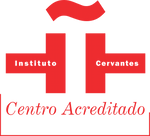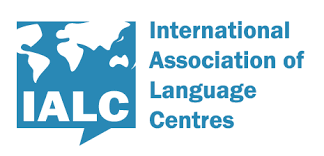Over the years, the borders have opened up and the possibilities of teaching a language like Spanish have multiplied: either by vocation, as a way of exchanging and disseminating Spanish as a foreign language (here or in other countries), all those interested have at their disposal a wide range of courses.
So everything..., what difference our Training Course of others? We could summarize it in two words: practical orientation. Our E/LE Teacher Training Course is practice-oriented. We teach how to give a Spanish class in Spanish: structure, content, materials, methodology..., everything so that candidates can put these skills and knowledge into practice in practical and real class sessions with student volunteers.
But... Who is this course for? What dedication is there to theory? How are the practices? What recognitions does the course have?... In the following points, we respond to all of this.
What is the profile of the people who take the course?
- People with the intention of going to work, study or train abroad and who want to carry training in their suitcase that can open more doors for them in the destination labor markets: “travel and work".
- Language teachers, primary, secondary, who want to retrain, learn a new methodology, change areas or open up to other offers.
- Foreigners who work as Spanish teachers. In these cases the level of Spanish required for non-native speakers: level C1.
What is the content of the course?
There are two main blocks THEORY, which takes place in the morning and PRACTICE, in the afternoon.
Inside the theory you see:
- Methodology:
- How to present the language
- How to practice in a more controlled way
- How to work with skills. There are 5 skills: productive (writing and speaking), receptive (understanding and reading) and interaction.
- how to learn vocabulary
- Correction etc
- Language analysis:
Above all, the grammatical points with which students of Spanish as a Foreign Language usually have more difficulties are analysed: verbs in the past tense, subjunctive tenses, the verbs SER/ESTAR or the prepositions PARA / POR, for example.
During practice:
Since the first practical classes students get closer to the reality of the classroom through classes taught by teachers and recorded on audiovisual support. An analysis, a reflection and a final sharing are made on them.
From the second week the candidates teach the classes themselves. To practice! For this, they have the help of a tutor in practical tutorials where they are guided and prepared to plan and schedule their sessions.
Within the practice there are three parts:
- Teaching classes to volunteer foreign students
- Analysis of what happened in the classes taught and sharing.
- Preparation of classes the following day.
The teachers take turns. Some days they teach while they are observed by the other classmates and the tutor, and other days they observe classes.
At the end of the course, what degree do you get?
Our course is recognized by International House and at the end we grant our own certificate and a personal report on the development of the practical sessions.
In addition, if you have a Diploma or Graduate you can also obtain the recognition of IL3-University of Barcelona which accredits 6 ECTS of training (equivalent to 150 course hours).
Visiting card to Lacunza International School
After all, if you are curious to know more details or clear up possible doubts about the Course, we invite you to visit us and meet us. We would organize a personal interview with our Head of Studies to discuss the course in detail, and then be able to see where we develop this activity and even how: you could attend a class session to understand our vision of work and learning.






